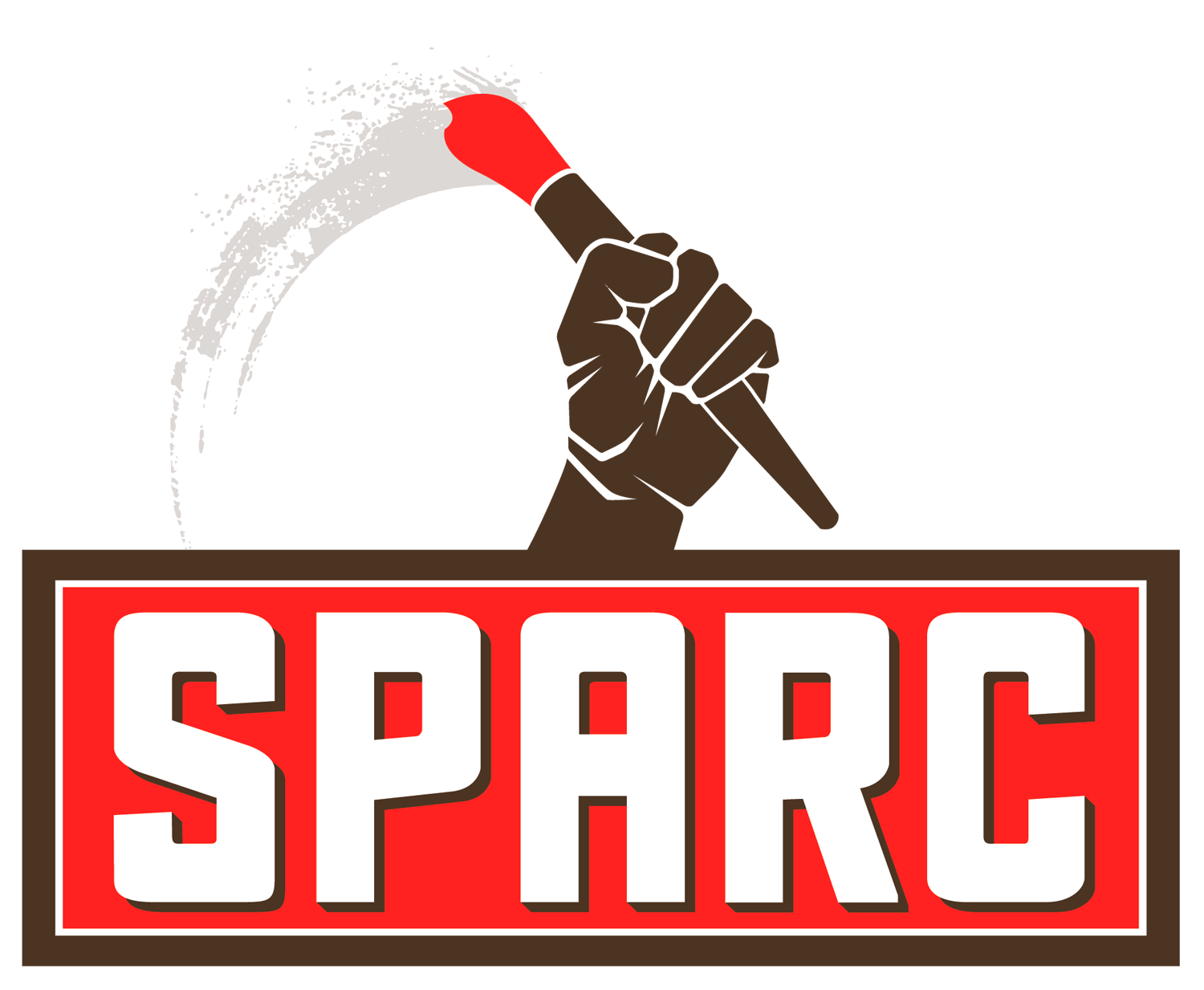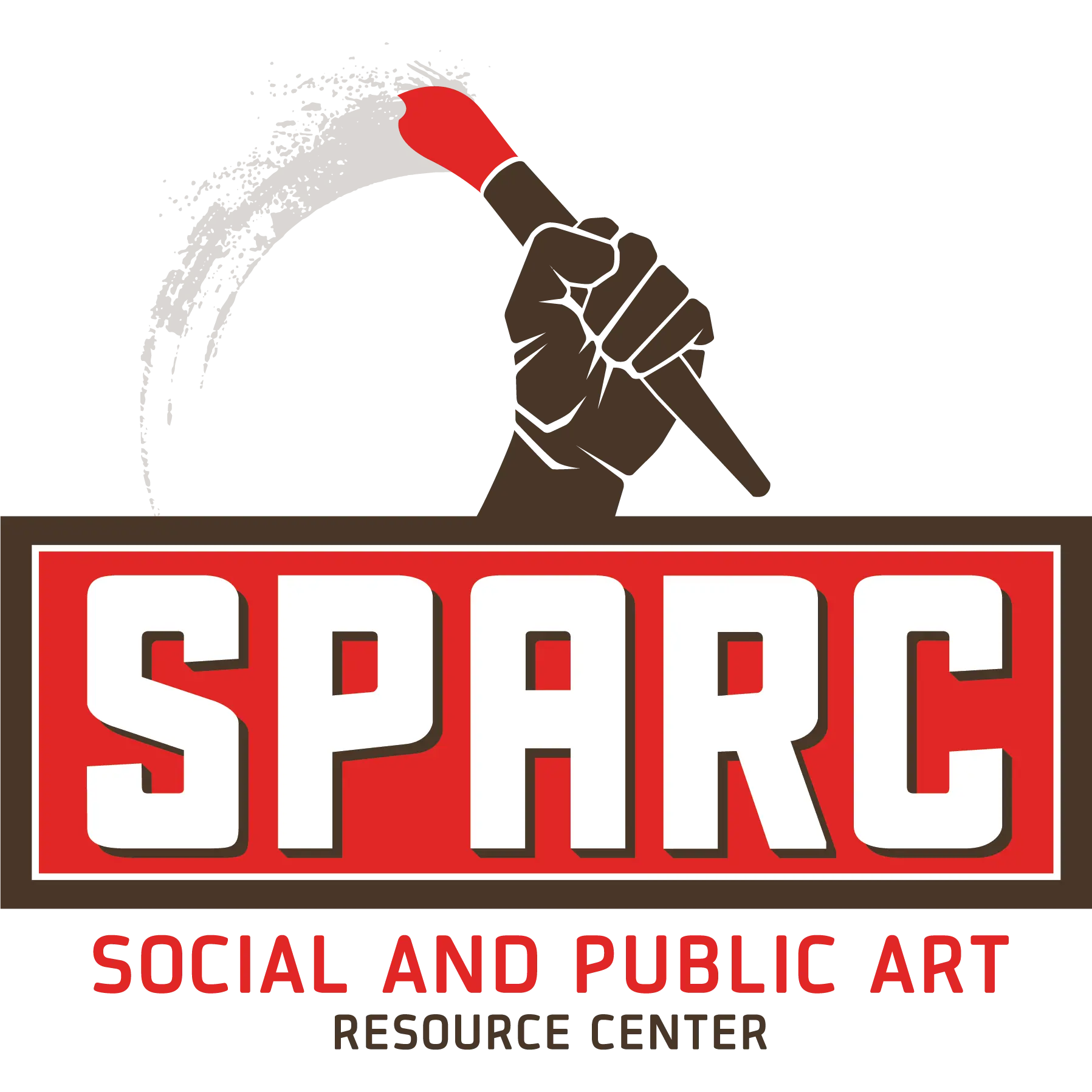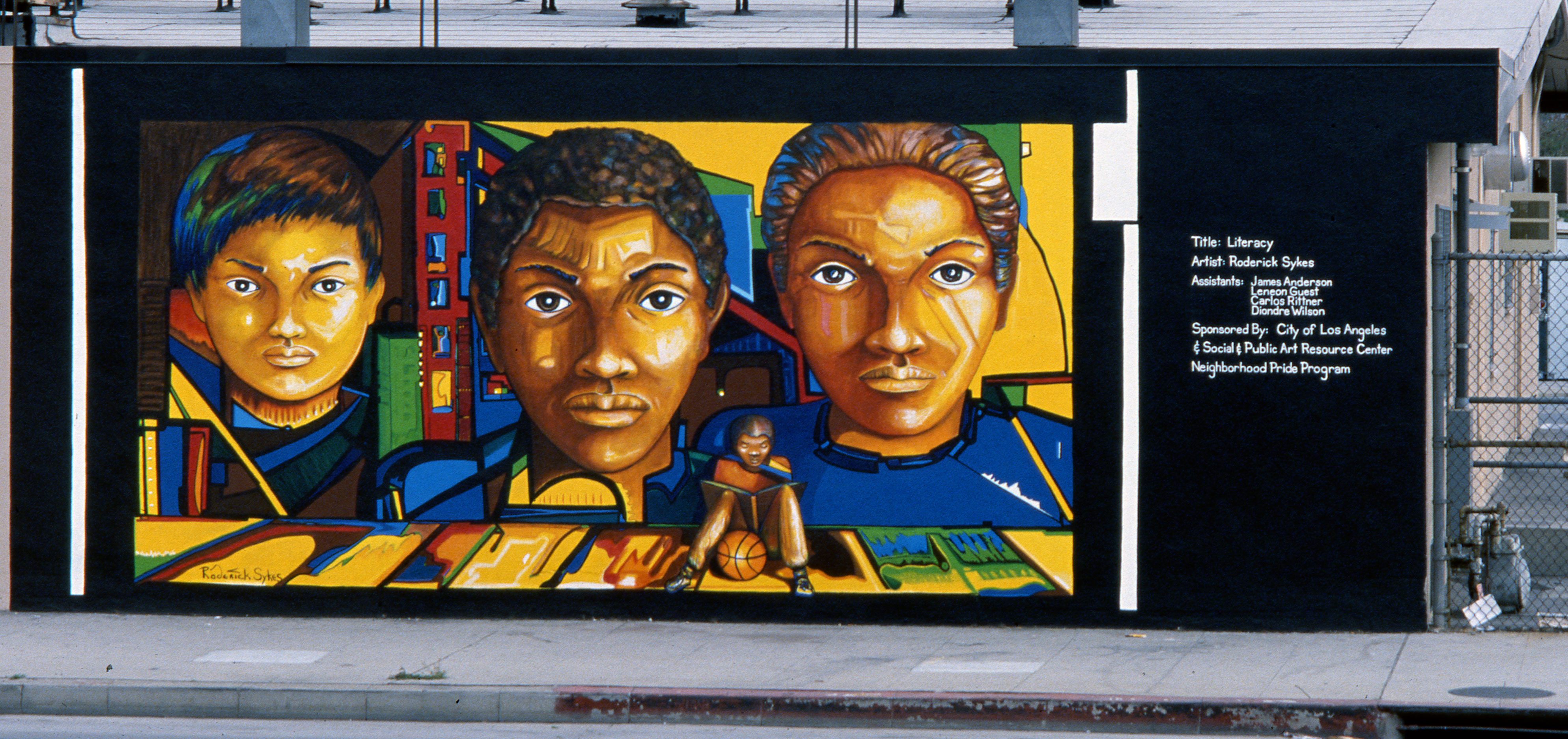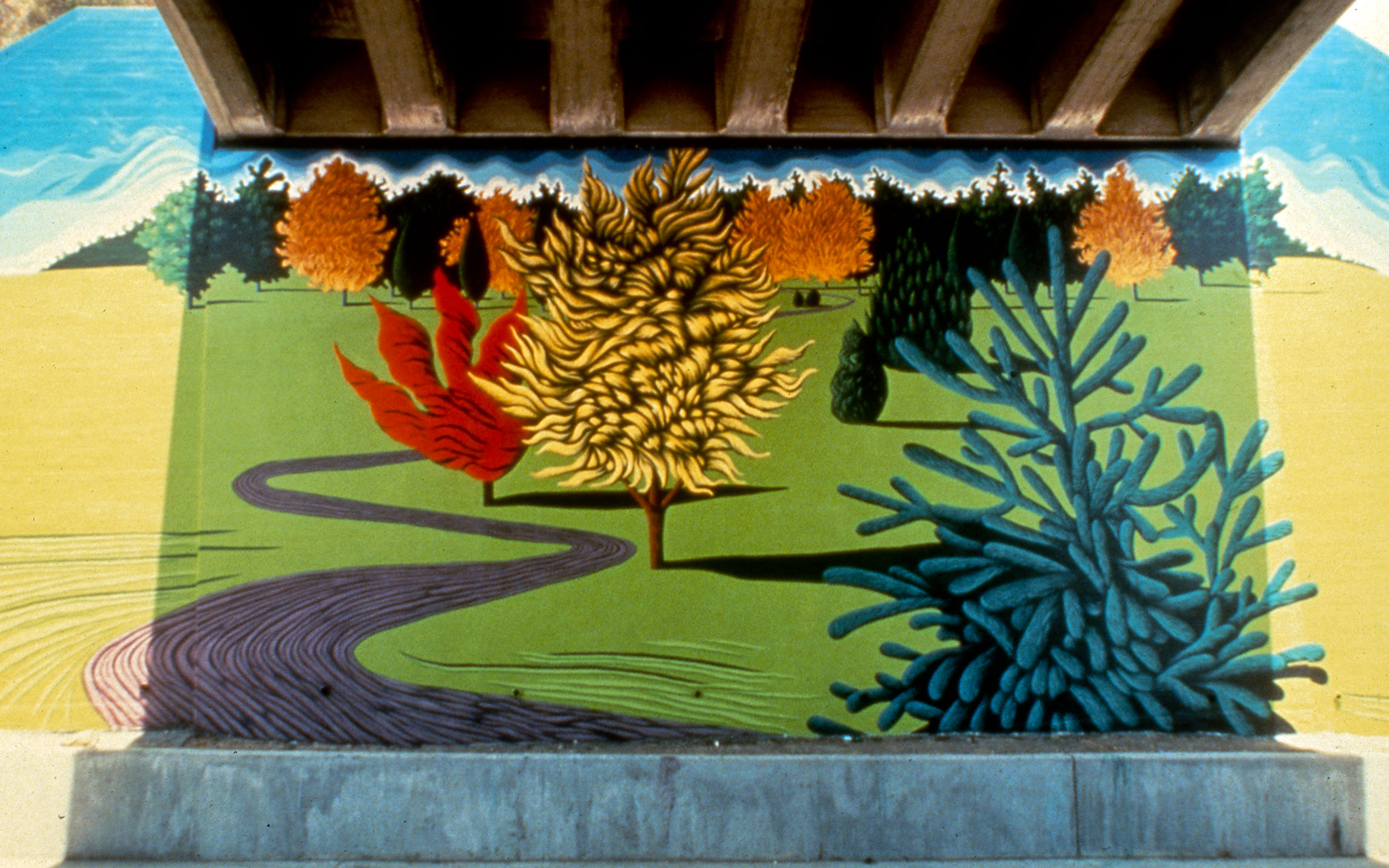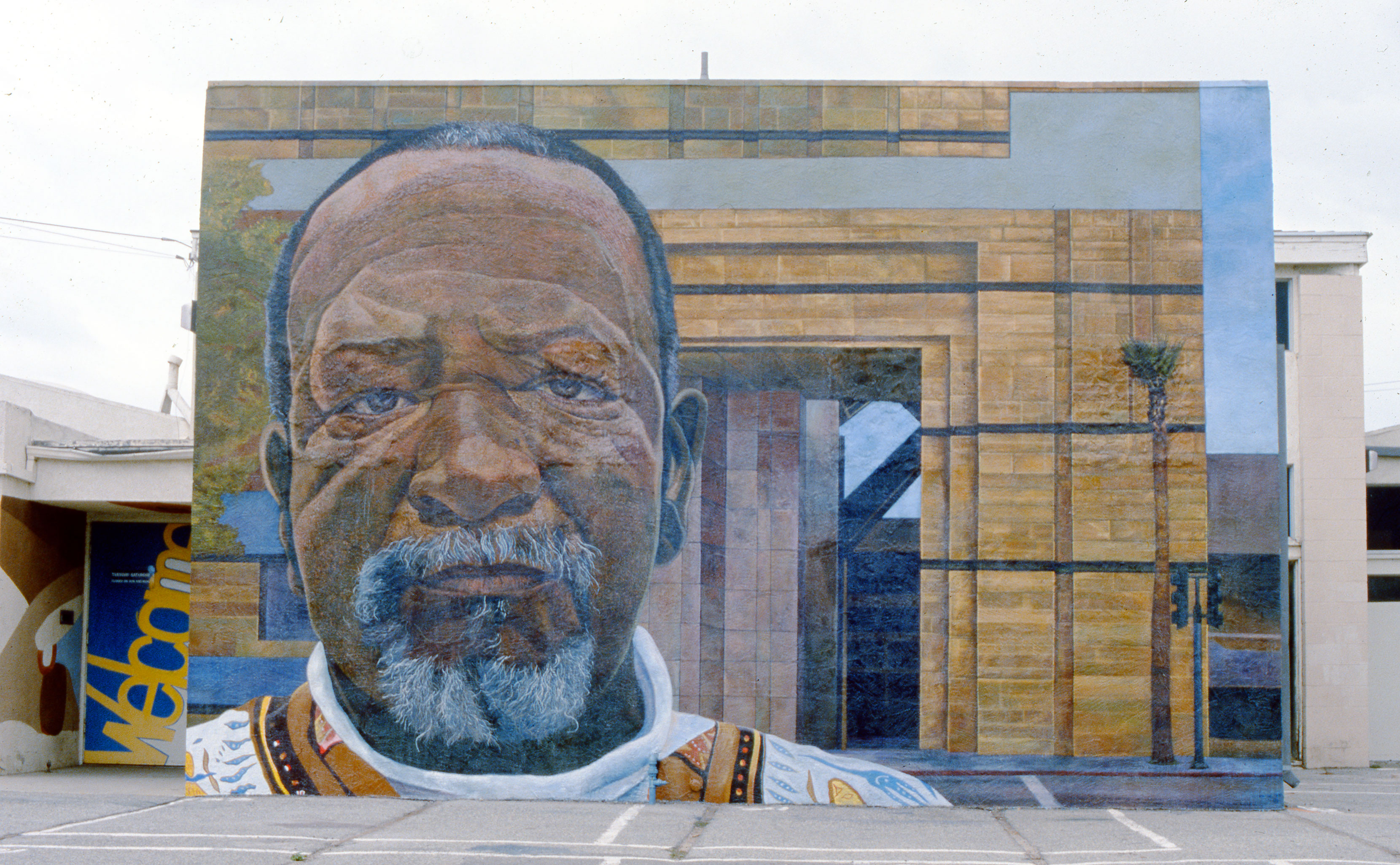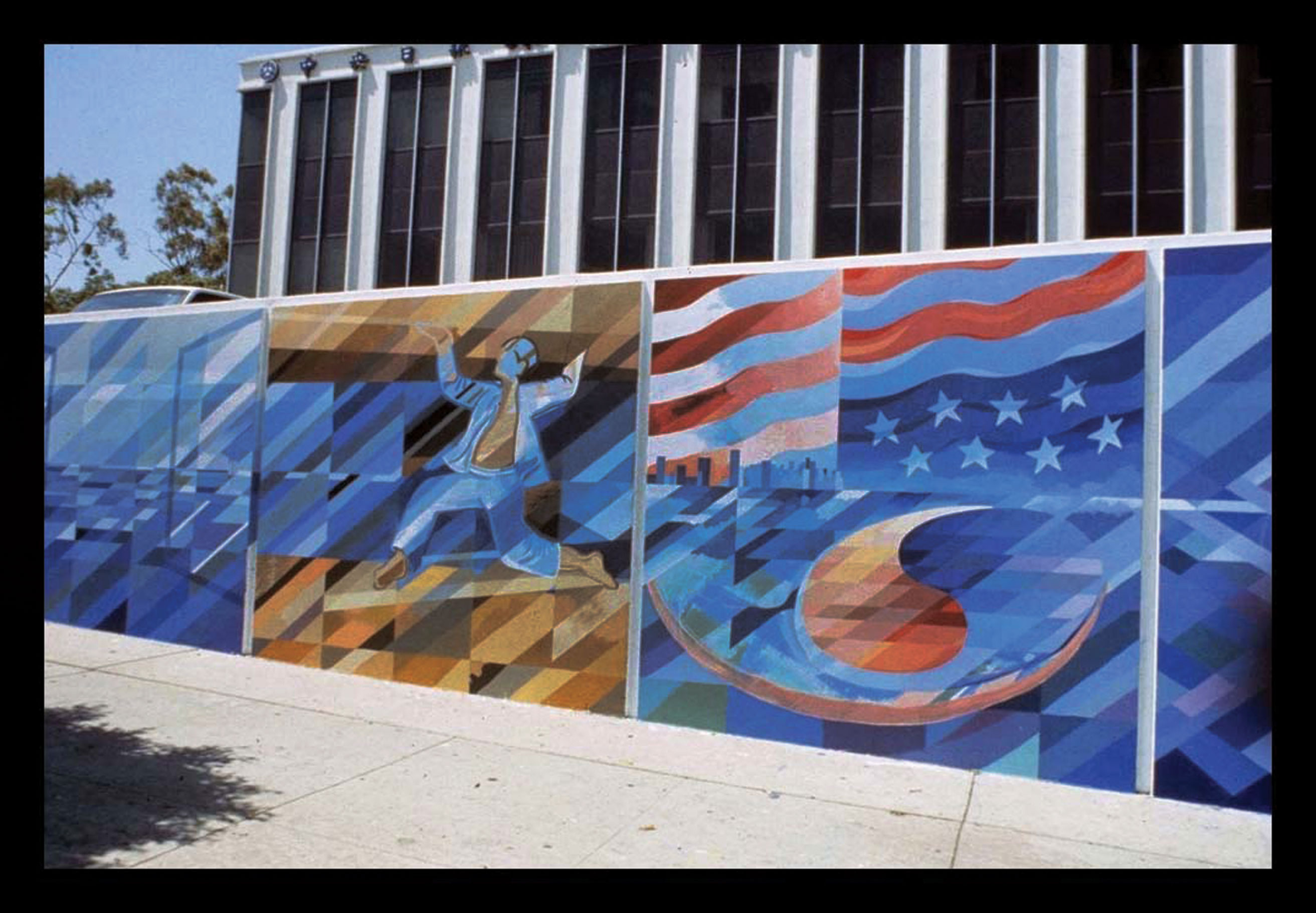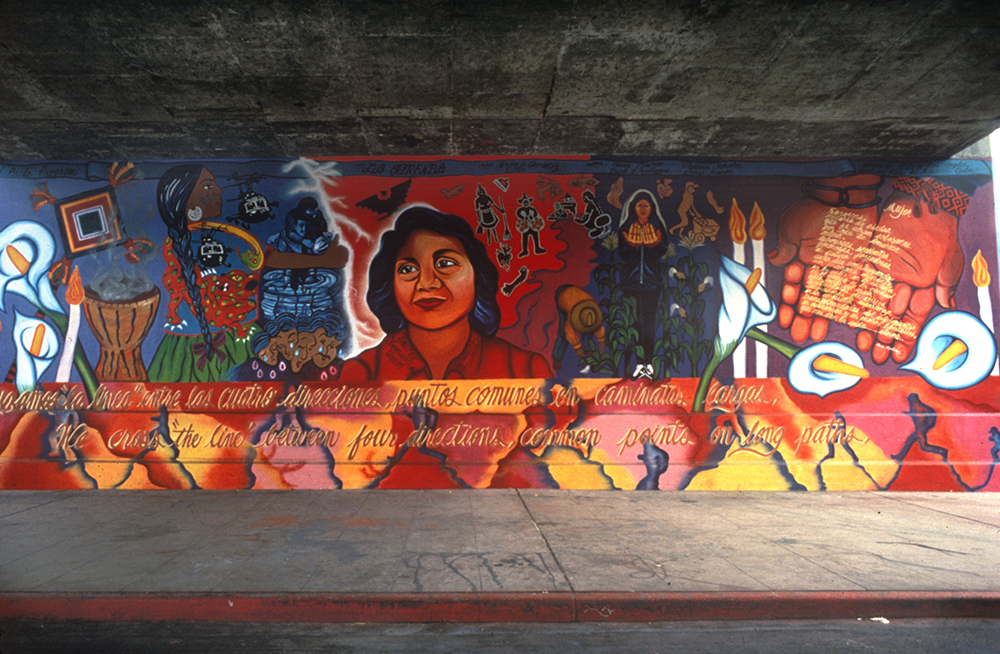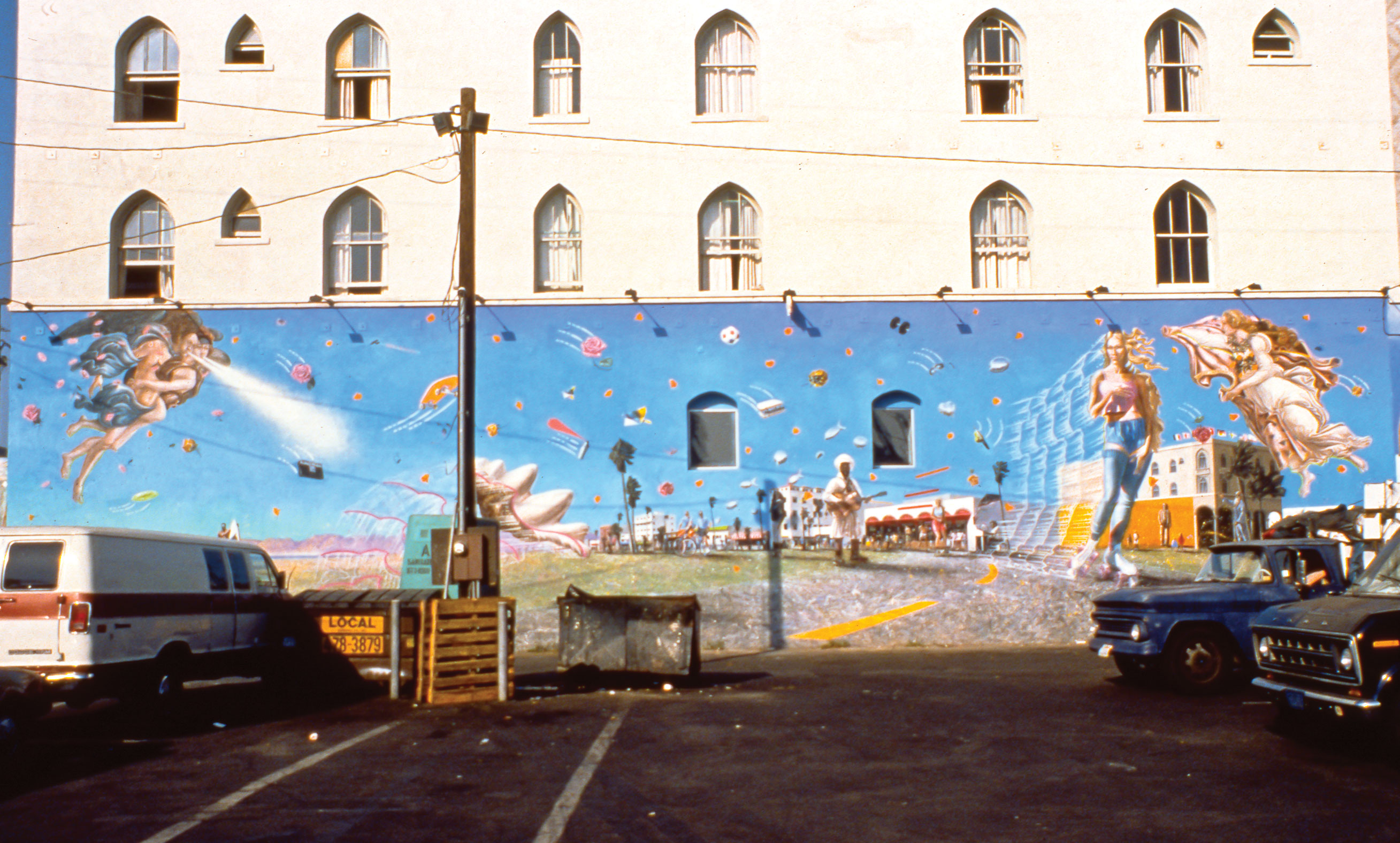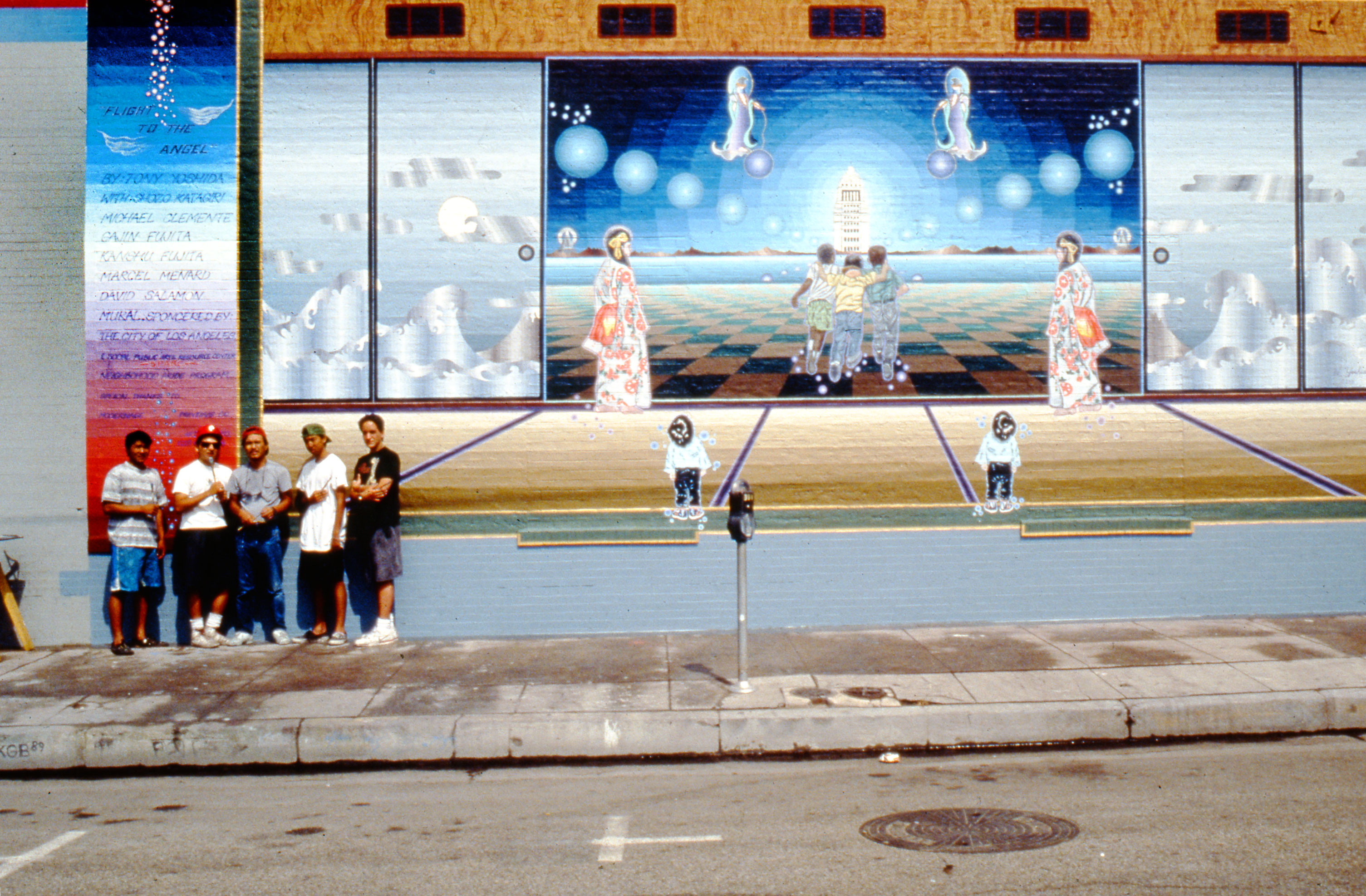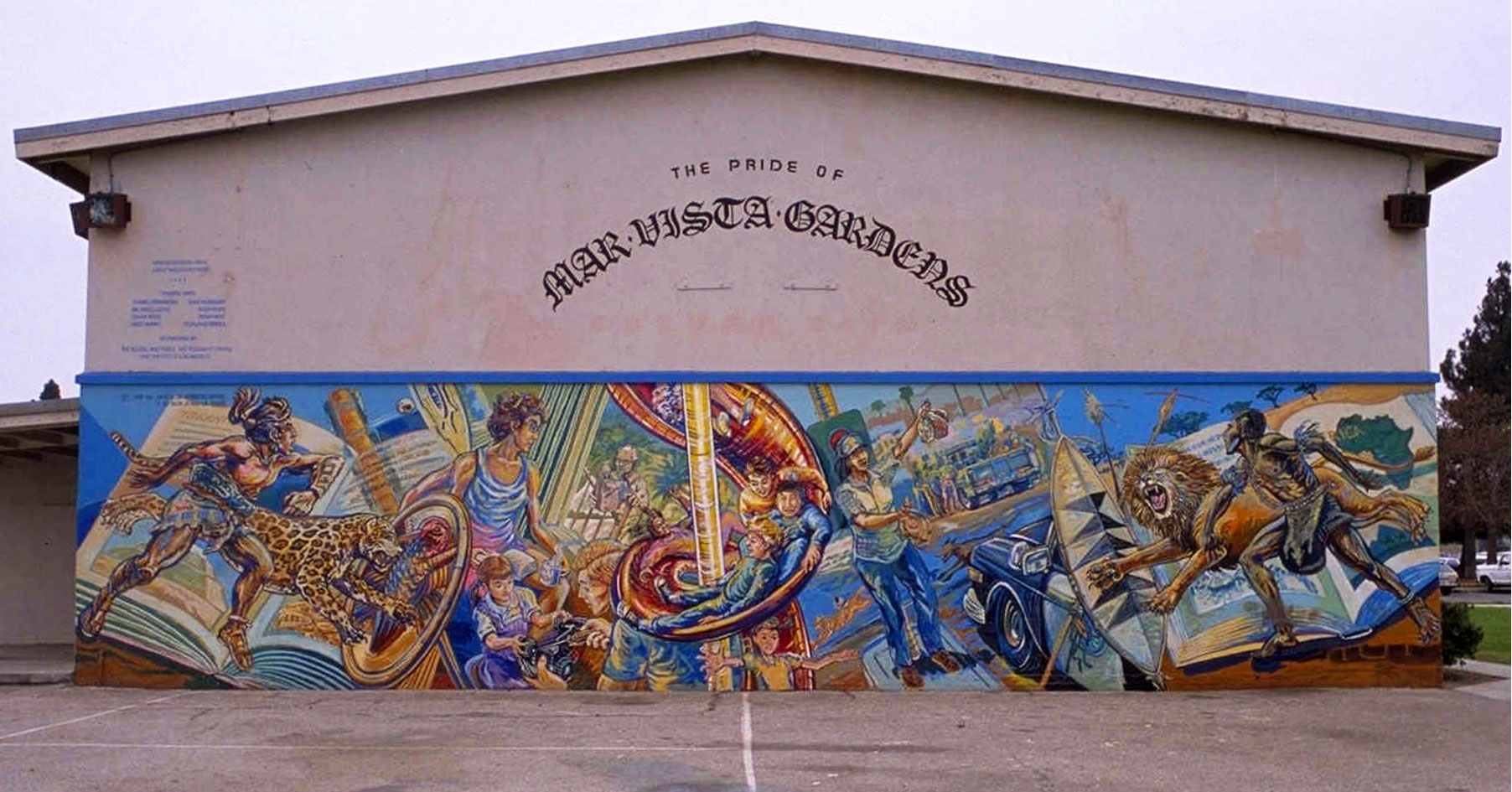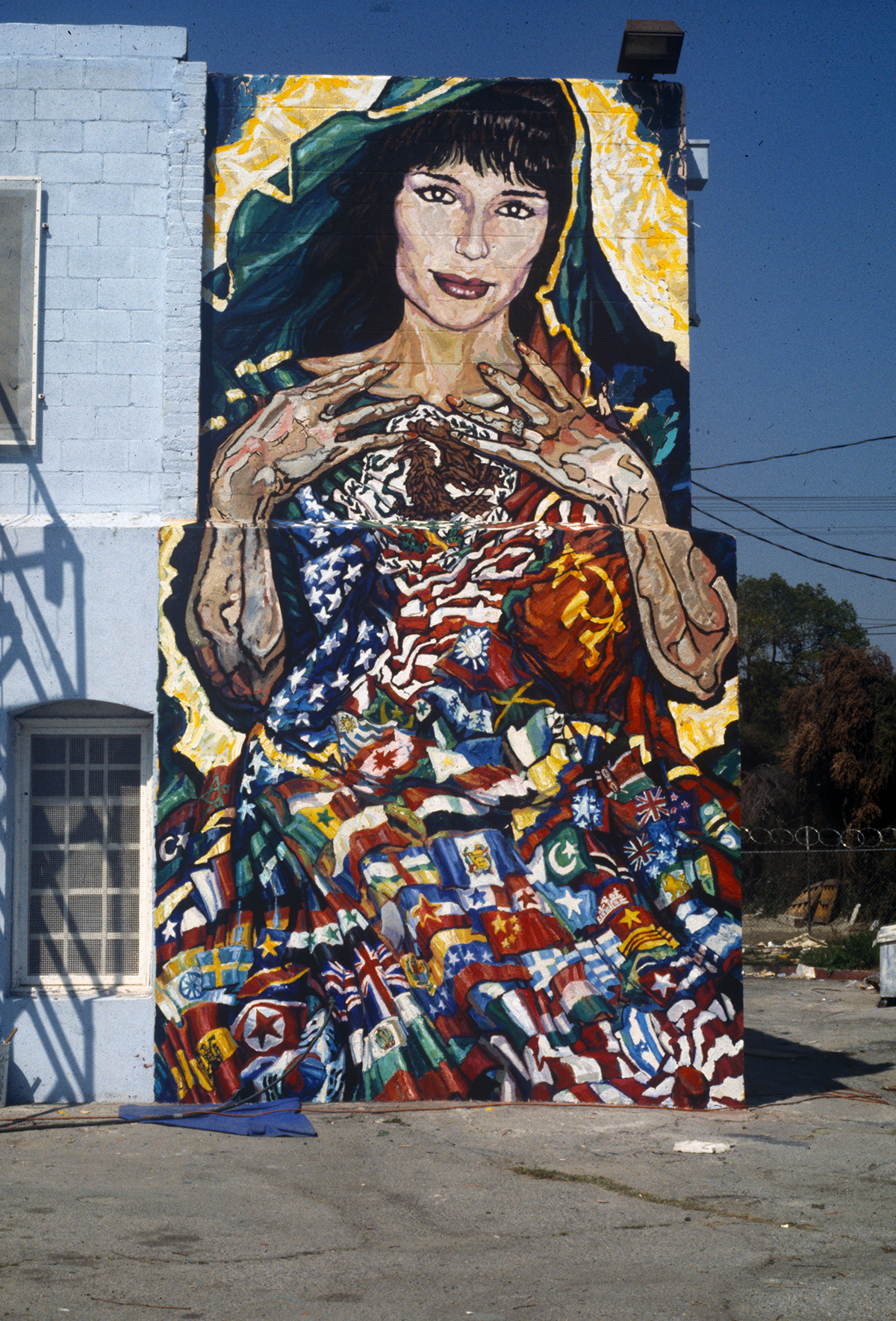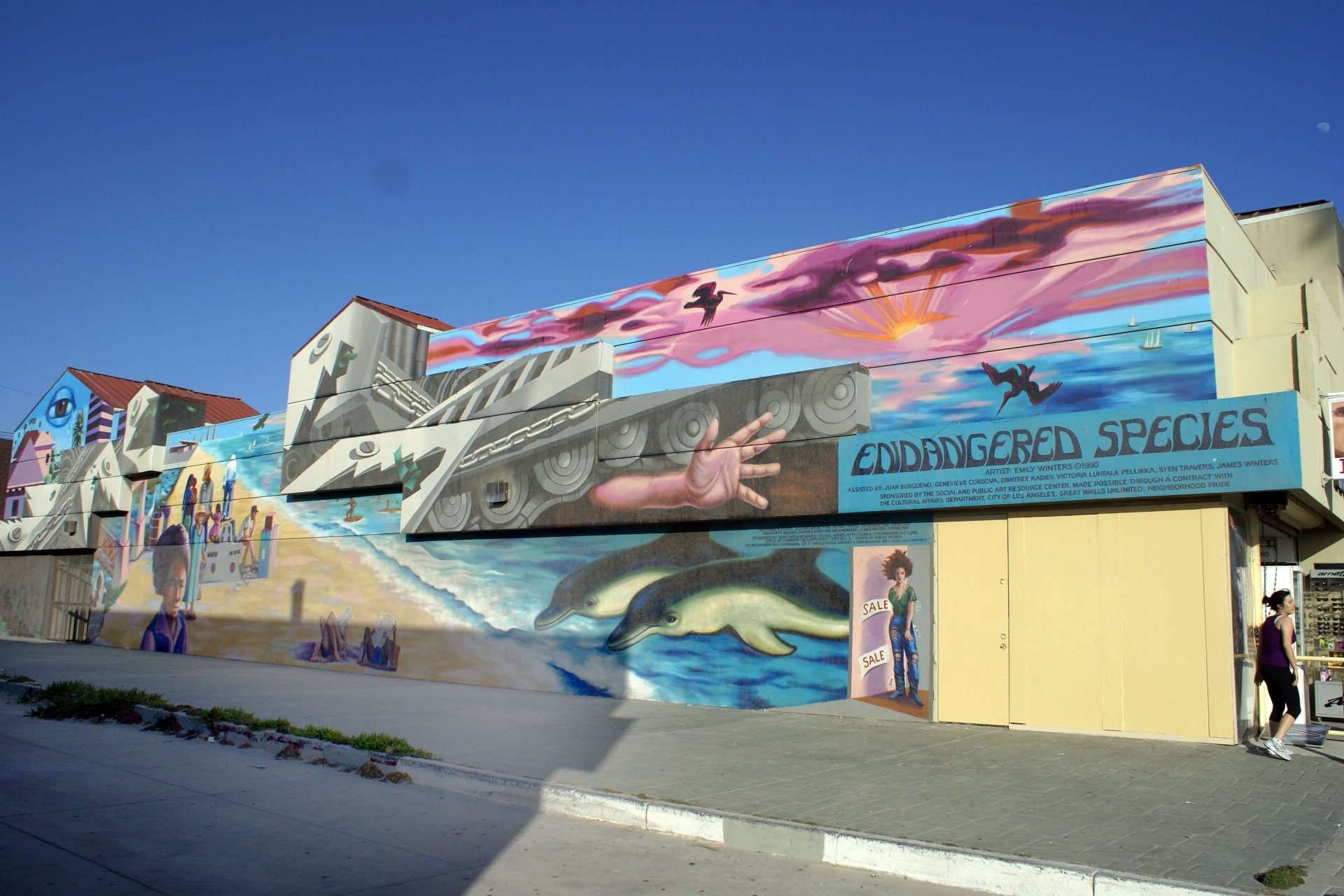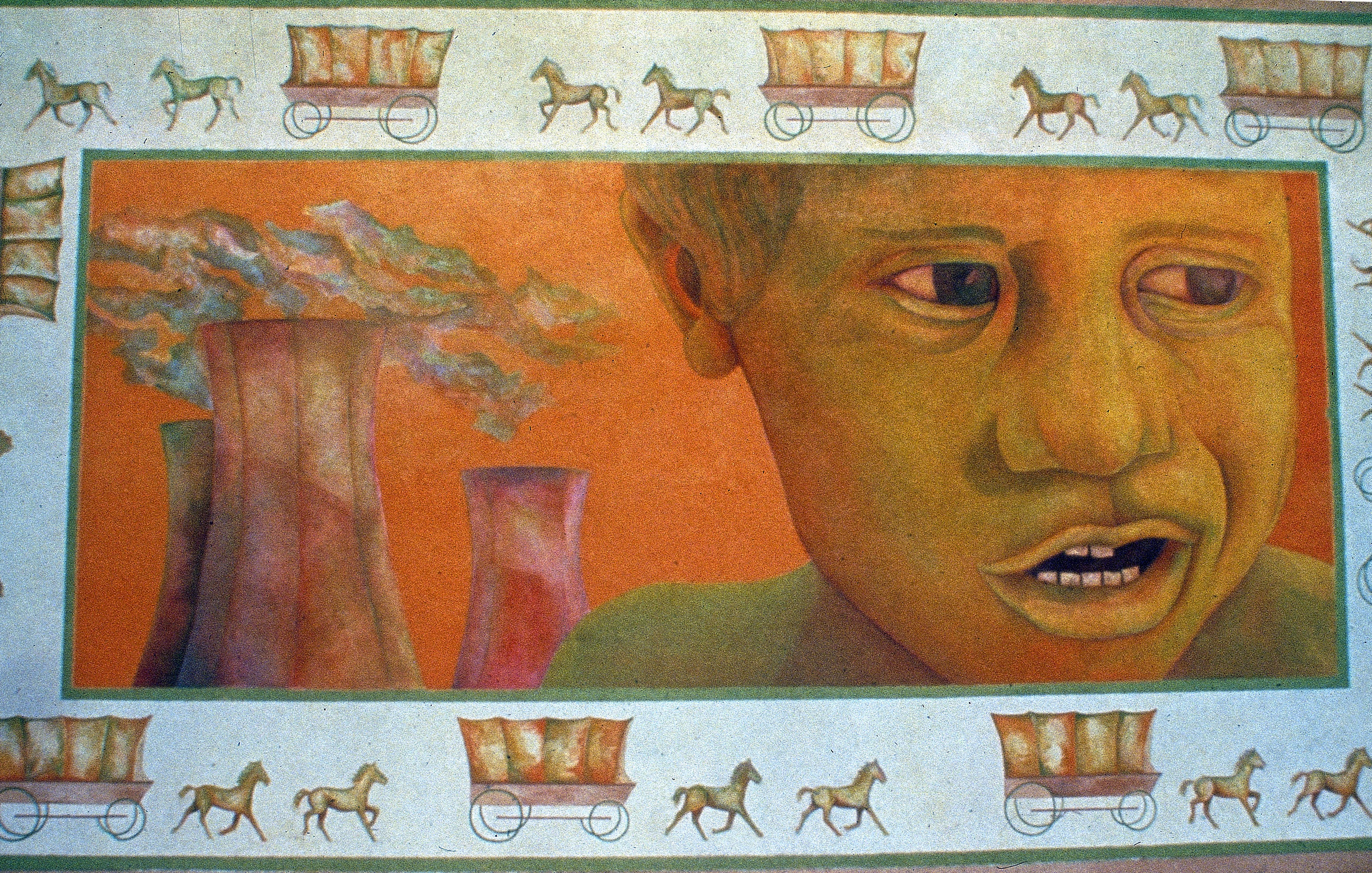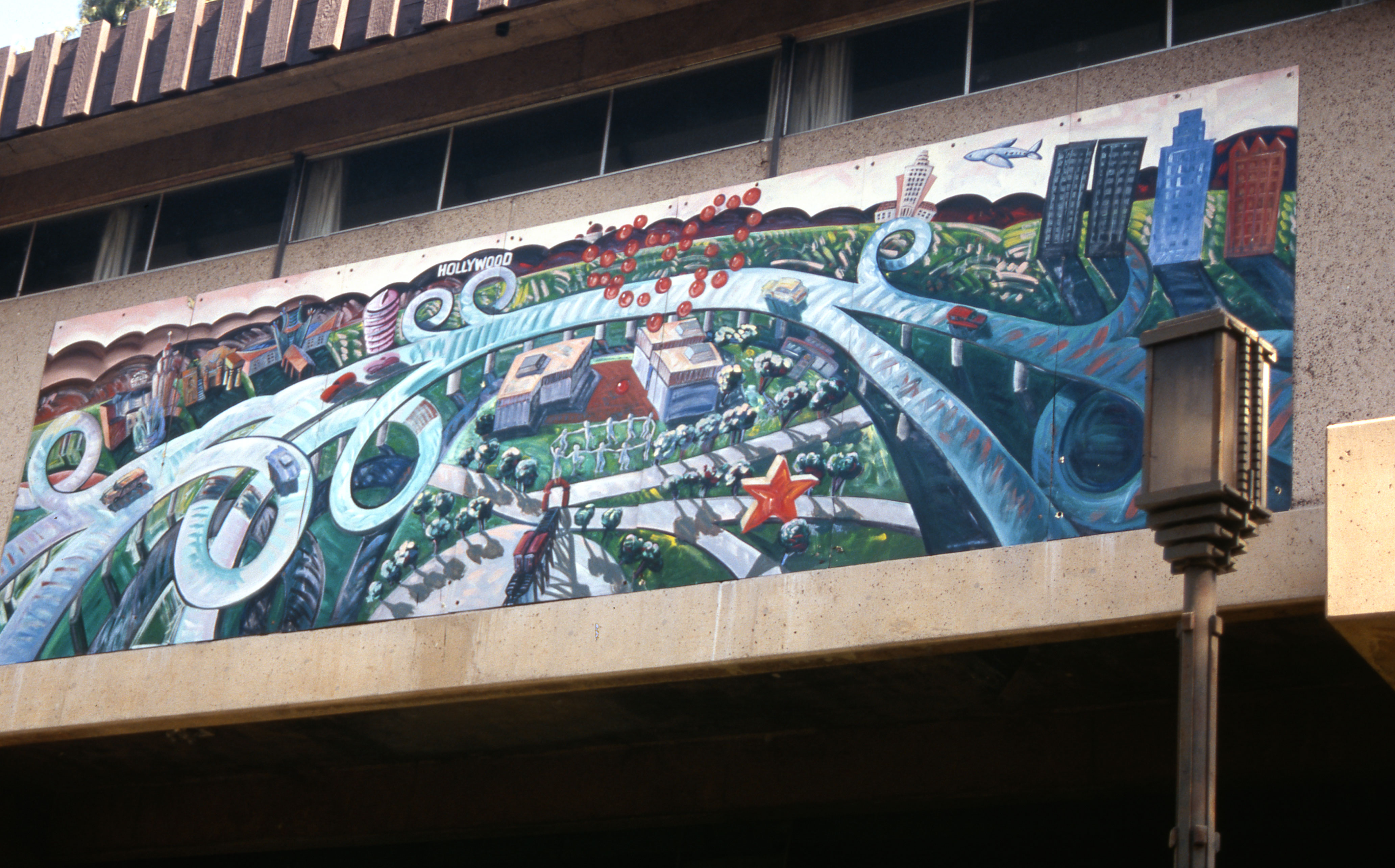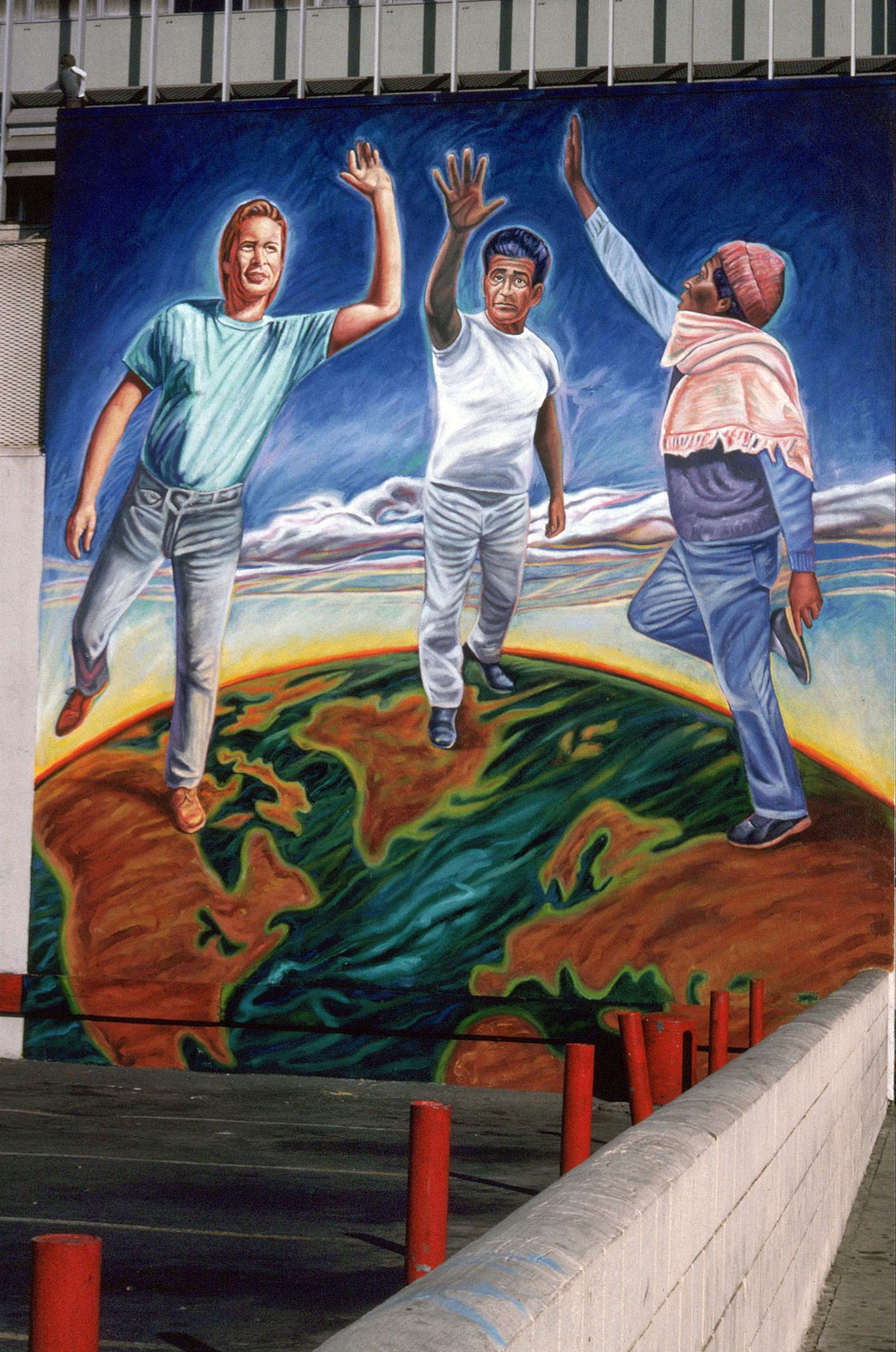Neighborhood Pride
“People often decry Los Angeles’ lack of an official center, a heart that feeds the arteries that run throughout its neighborhoods, but it is this lack of center that creates the opportunity for democratic process that is multi-ethnic, multi-cultural, multi-lingual, multi-faith, multi-historical, in essence multi-centered. It is not that the City of Los Angeles lacks heart but that it has many hearts, beating simultaneously and inexhaustibly.” -Pete Galindo, former Neighborhood Pride Director
The Great Walls Unlimited: Neighborhood Pride Mural Program was conceived as a citywide extension of the Great Wall of Los Angeles. Begun in 1988, the program has since produced 105 murals in almost every ethnic community of Los Angeles. Over its fourteen-year history Great Walls Unlimited: Neighborhood Pride employed over 95 different established and emerging muralists from Los Angeles and around the country, trained hundreds of youth apprentices, collaborated with countless community based organizations, worked closely with the fifteen different Council Districts that make-up the city of Los Angeles, worked with minority owned businesses, scholars, and The City of Los Angeles Department of Cultural Affairs all to produce images that speak to the multi-ethnic communities that make up the city. As the first program of its kind in the nation, Great Walls Unlimited: Neighborhood Pride has become one of the country’s most respected model mural programs setting a standard which has inspired other cities across the United States. Sadly, due to budget cuts and other issues outside of SPARC’s control, 2002 marked the final year of the Great Walls Unlimited: Neighborhood Pride program. In the final year fifteen new murals were completed, painting a colorful ending to the mural program that helped make Los Angeles the mural capital of the world. Today the Great Wall and Neighborhood Pride murals continue to be visited by members of the local communities and visitors from around the world. The murals have proven over time to be a valuable lens through which to see Los Angeles by residents, artists and social scientists alike. For scholars, these murals hold the visual keys that give the voice to those often not included in the traditional historical recordings.
Literacy (1989) by Roderick Sykes
| Location | L.A.U.S.D. Maintenance Building 1406 South Highland Ave. (at Pico Blvd.) Los Angeles. |
| Artist | Roderick Sykes has been involved in local community arts since 1970. He is the co-founder of St. Elmo Village, a neighborhood-based arts center in the mid-Wilshire are. |
| Subject | The mural depicts three faces, that of an African-American, an Asiana-American and a Latino, meant as a celebration of the ethnic diversity in Los Angeles. It emphasizes the importance of literacy, creativity, and the role of the community in education. |
| Status | Whitewashed by CalTrans after 90 day notification to artist to remove graffiti. |
Urban Eden (1988) by Karen Kitchel
| Location | 101 Fwy (North), Mullholland overpass on Cahuenga Blvd East and Lakeridge Rd. |
| Artist | Kitchel’s oil paintings are in several provate and public collections, including the permanent collection of the Denver Art Museum, the Palm Springs Art Museum, the U.S. State Department, and many others. |
| Subject | A burst of color to counteract the urban jungle and the miles of concrete that run through Los Angeles. |
| Status | Whitewashed by CalTrans after 90 day notification to artist to remove graffiti. |
Cecil (1989) by Richard Wyatt
| Location | Watts Tower Arts Center, 1727 East 107th Street, Watts, Los Angeles. |
| Artist | Born in Compton, Richard Wyatt was first commissioned to paint a mural at the age of 14 by UCLA. He graduated from the university a few years later and has since exhibited widely and taught in various schools across the nation. His murals can be found scattered throughout the Los Angeles area, including pieces at Union Station, LAX, and Long Beach City Hall. |
| Subject | Cecil Fergusen is a legendary figure in the field of African American Art; he is known as the “community curator” and celebrated for his incredible rise through the ranks of the contemporary art world. Starting as a janitor for LACMA, he worked his way up to the position of curator. The first African American to hold the position, he encouraged ethnically based art and co-founded the Black Arts Council. His reputation for tireless support and advocacy for his cause has given him a wealth of loyalty and respect among his peers, the artists he has helped, and the entire African American community of Los Angeles. |
| Status | The mural has suffered severe UV(sun) damage. |
Koreans (1989) by Dong-In Park
| Location | 690 Wilshire Place, 7th street, Los Angeles |
| Artist | Dong-IN Park, a native of Seoul, Korea, studied architecture at the College of Fine Arts at Hong-Ik University. He came to Los Angeles in 1974 after doing combat service in Vietnam as a solider in the Korean army. In 1991 his first mural, a portrait of Ansel Adams, was painted over for advertising. |
| Subject | The mural is made up of several panels depicting the plight of the newly arrived immigrant. Issues addressed include culture shock, loneliness, the rewards of hard work, and the blending of cultural differences. |
| Status | Completely whitewashed (after restoration in 1995) |
La Ofrenda (1989) by Yreina D. Cervantez
| Location | Toluca & 2nd Street (under bridge), Downtown Los Angeles |
| Artist | Yreina D. Cervantez was born in Kansas and received a degree from UC Santa Cruz, and an MFA from UCLA. |
| Subject | The ofrenda, Spanish for “offering,” is an alter made to made to honor a saint or important person. This ofrenda is made in honor of Dolores Huerta, the co-founder of the United Farm Workers of America. The offerings come in form of candles, calla lilies, a god’s eye, and images of the workers for whose rights she fought for. On the right side of the piece, open hands display a poem by Gloria Alvarez. The mural is an homage to the strength of Latina women. It brings attention to the hardships of war and immigration, while highlighting the life and hope that endures through these struggles. |
| Status | The mural has suffered sun and graffiti damage. |
Venice Reconstituted (1989) by RIP Cronk
| Location | 25 Windward Ave. and Ocean Front Walk Venice Boardwalk |
| Artist | Rip Cronk established himself as a world class muralist before relocating to Los Angeles in 1979. After securing a postion as a muralist-in-residence at S.P.A.R.C., he completed his first California mural, “Venice on the Half Shell.” Cronk’s work has since become visually synonymous with Venice Beach. |
| Subject | The piece is one of Cronk’s most recognizable, dealing with the juxtaposition of art history, contemporary society and the importance of questioning the nature of mythology. The mural is a tongue-in-cheek pop-surrealistic portrait of the Venice Boradwalk in 1989. It is a a parody not only if the Botticelli masterpiece “The Birth of Venus,” but also a remaining of the earlier Venice Pavilion mural that contains the same figure. |
| Status | Mural has suffered delamination and heavy graffiti. |
Flight of the Angels (1988) by Hitoshi Yoshida
| Location | 407 East 3rd StreetLos Angeles |
| Artist | Hitoshi Yoshida was one of the first artists commissioned to create a mural for the Neighborhood Pride Program. His Mural has been referenced in multiple books on the subject of religion and spirituality in the context of urban space. Artist deceased. |
| Subject | Yoshida describes the mural as “a synthesis of Eastern Buddhist mandala symbolism with primal pictorial Western landscapes.” The design is based on the Tibetan mandu, a form that represents the universe. Two boys (the artist’s nephews) look into a traditional Japanese room. At the opposite end of the room two girls dressed in Yukata (summer kimonos) are framed by Fusuma (sliding doors) decorated with an homage to Hokusai. Three children, each representing a different ethnic identity, walk towards Los Angeles City Hall. The two figures in the sky represent Hi-bokanun, the androgynous Buddist angel who predicts childbirth. |
| Status | The building that was home to the mural has since been, demolished, replaced by a parking lot. |
The Pride of Mar Vista (1989) by East Los Streetscapers
| Location | Inglewood and Alan Mar Vista |
| Artist | East Los Streetscapers (ELS) was founded in 1975 by Wayne Healy and David Botello, both veteran of the East LA Mural Movement. Healy was born in Santa Barbara and worked as an aerospace engineer before dedicating himself fulltime time to ELS. Botello was born and studied in East Los Angeles. He is an experienced artist and muralist who has received two National Endowment for the Visual Arts Fellowships. ELS projects are executed in a wide variety of materials and include the Metro Rail Slauson Station and Parque Pobladores in San Jose. |
| Subject | Reflecting the African-American and Mexican-American composition of the Mar Vista neighborhood, the mural draws upon ancient African and Mexican Traditions as well as imagery of contemporary family life. |
| Status | The mural has suffered heavy graffiti and delamination damage, sections have been whitewashed. |
Untitled (1989) by Robert Delgado
| Location | Pico Gardens housing Project, 1526 East 4th Street, Los Angeles, CA 90033 |
| Artist | Delgado studied at the Academy of Arts in Rome, Italy, and earned a BFA and MFA at the UCLA. Under a 1987 Fulbright Fellowship, delgado painted three murals in Mexico. In 1989, by the invitation of the Nicaraguan Ministry of Culture, he travled to the country and created two murals. He did two other murals in Phoenix, Arizona. In 1990, the city of Lompoc, California commissioned him to do s mural on the local Chamber of Commerce. His easel paintings have been exhibited locally in solo and group exhibitions. In 1992 delgado and artist Wayne Healy were awarded a grant by the Joint Spanish/U.S. Committee for Educational and Cooperation to paint in Barcelona, Spain. |
| Subject | Semi-abstract design that combines Aztec symbolism and photo-imaGREY. |
| Status | The building, that was home to the mural, was entirely rebuilt–the mural was completely destroyed. |
Mujer Del Este De Los Angeles (1989) by George Yepes
| Location | 418 South Pecan Street, Boyle Heights, CA |
| Artist | Born in Tijuana, raised in East L.A., and formed by a hard life–of poverty, gang violence and womanizing–Yepes gained an early reputation when he painted with notable artists (Carlos Almaraz, Frank Romero and Gilbert “Magu” Lujan, among others). He then became an instrumental partner in the mural group “East Los Streetscapers” until he left, due to creative reasons. Yepes had painted over 800,000 square feet of social, historical and sacred images onto the façades of buildings ranging from hospitals to churches.His 28 murals are landmarks in Los Angeles, as are the 21 murals that his students of the Academia de Arte Yepes have painted. The Academia is a free program that has taught nearly 1500 low-income students in the art of mural painting for over the last decade. |
| Subject | The mural depicts a veiled Latina holding the flags of more than 100 countries. The title, “Lady of the Eastside” is an allusion to the city’s original name, El Pueblo de Nuestra Señora la Reina de los Angeles. According to Yepes, the model for the mural was Guadalupe Ontiveros’, 32, a student at East Los Angeles College–originally from México. The piece represents a community that has greatly matured, and has become multiethnic. |
| Status | Slightly fading; the mural is protected from direct street access, and can be directly viewed from a nearby freeway. |
Endangered Species (1989) by Emily Winters
| Location | 16 Park Ave, Venice, CA 90291 |
| Artist | Originally from Illinois, Winters received a BFA in drawing and painting from The School of the Art Institute of Chicago. She moved to Southern California in 1963 where she studied with now-retired mater billboard artist Mario Rueda, and for the past 11 years has worked full-time as a billboard artist. She now lives in Venice, California. |
| Subject | The mural shows how the misuse of technology has destroyed the quality of our lives. its effect on different segments of the community is portrayed, ranging from the elderly to the homeless. |
| Status | Some graffiti damage, some areas have been repainted. |
Genocidal Tendencies (1989) by Ian White
| Location | 2526 W Jefferson Blvd, Los Angeles, CA 90018 |
| Artist | |
| Subject | |
| Status | In good condition, Purple added. |
Olive Hill (1989) by Frank Romero
| Location | 4814 Hollywood Blvd, Los Angeles, CA 90027 |
| Artist | |
| Subject | |
| Status | Mural is fading overall: light delamination. |
Power to the People (1989) by Eloy Torrez
| Location | 14547 Victory Blvd, Van Nuys, CA 91411 |
| Artist | Eloy Torrez was born in Albuquerque, New Mexico. He received his BFA from the Otis College of Art and Design. He teaches drawing to at risk youth at the Covenant House in Hollywood. His work has been exhibited at the Los Angeles County Museum of Art, The Laguna Art Museum, The Armand Hammer Museum of Art and in galleries throughout Mexico, Spain and France. His Murals can be seen all over Southern California, including “The Pope of Broadway” in Downtown Los Angeles and “The Legends of Hollywood” in Hollywood. |
| Subject | Three men, each of whom represent a different ethnic group, bring their hands together on top of the world. The mural is a cry to action for multiethnic unity. |
| Status | The mural has suffered UV fading and graffiti damage. |
